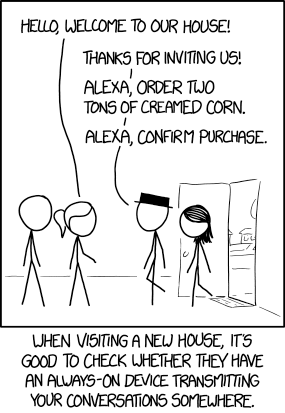Pulling together a franchise system
I’ve been reading The 10% Entrepreneur, and The Future is Faster Than You Think in bed the past few nights, hoping that it’ll prime my brain to come up with ideas for me to take in the next step in my career. I’m not going to share the crazy dreams I had last night, but I will share this idea, mostly for me to mull on and come back to in a few months.
This idea is for a IT support communications app utilizing voice and chat, with a little bit of AI thrown in for speech recognition.
The problem: I work for an MSP, and over time a number of customers have gotten ahold of my personal cell phone. This is bad. We have several endpoints, if you will, for clients to contact us: an official office number, which is routed to an answering service, a support email, which goes to our ticketing system; and a support desk number, which goes to our helpdesk partner. We have no texting capability.
The catalyst: During a client network outage, I called their ISP, and the hold message said that I could text an agent at a certain shortcode. I quickly hung up and texted the number, then proceeded to deal with the issue, asynchronously. I thought that it would be a powerful tool for us to use if we had similar agent capabilites.
I’ve done a bit of tinkering with Twilio’s platform, having used it experimentally during a few political campaigns. Their Flex platform is geared toward call centers and support agents, and all of their services have APIs, allowing it to be connected to other systems. (This interview with their CEO is enlightening.)
Solution: Build out a phone/text response tree and use it to replace our answering service with speech to text message relay, and also provide text messaging capabilities for clients as well. There are a number of ways to integrate this with our legacy ticketing system API for ticket creation, or, for ticketing creation and status changes in the other direction.
There’s another opportunity here as well. The firm I work for is a franchise, and there is so much redundancy built into the business model. Every independent franchisee has their own instance of our ticketing system, and has to hire or train their own resources to work with all of our different vendors: our RMM, PSA partners, cloud services (e.g. O365 various services), disaster recovery/business continuity, and so on. I don’t even want to try and count the number of vendors that I have to deal with. Personally, I’m well suited to this type of jack-of-all-trades position, but I’m at the point now where I brisk at having to learn or deal with some new system that doesn’t have APIs or programmatical interfaces. And through my interactions with other franchisees and techs in our Slack, I can tell that some of them are less than capable of handling some of these projects.
The onboarding process for our location was very difficult. We were pretty much handed some tools and left to figure them out for ourselves. There’s been some improvements in how this is handled more recently, but one of our vendor onboarding documents was near fifty pages of step-by-step instructions and screenshots.
I’ve tried to set up some automations internally, and tried to get traction among the other franchisees, but the appetite just doesn’t seem to be there. I just don’t think the owner community is really thinking along the same lines as me, and this is one of the main reasons why I don’t think the firm is a good fit for me any longer. I approached one of the home office leaders about using some of the API work I’m doing to do some cross-franchise data mining, and got dismissed out of hand.
I think there’s a huge opportunity to consolidate some of these roles and operations across the franchise system. In fact, I think that it’s the only way that some of the smaller franchises are going to survive. That said, I think the way the business model works, and the way the franchise system has been sold to the franchisees will allow these improvements to be made.
The system I’ve described above should allow multiple franchise locations to share the same dispatching and messaging contacts, and allow messages to be routed to the proper client owner. I will share this idea within the global group, to see if anyone is interested funding development of such a system.
